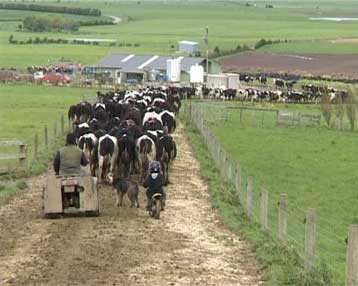
Good rains in most of the north island have boosted grass growth rates to over 40kgdm/ha, but in the south the east coast still struggles with dry soils and low growth rates on unirrigated land.
A financial dilemma is evolving with plentiful feed in the Waikato on the economics of making extra baleage and keeping feed quality high, compared with the cheaper cost of pke and compromising on pasture quality, especially with those on very tight budgets.
Temperatures have improved in the deep south, and contractors are flat out making up for time lost during the cold wet spring, and in many other south island regions surplus spring pasture for supplements has been missed.
Forage crops have recovered from their patchy start but the volumes will be determined by occasional summer rains.
Milk production has been adjusted back by Fonterra to similar volumes as last year, with a prediction that managers will quickly cull inefficient cows rather than buy in feed.
Dairy advisers are suggesting a reappraisal of the business plan for survival, with pasture management, mating performance, and communication, the key areas of importance.
The Guaranteed Milk price scheme has closed for December, but as yet no data to analyse, but the volumes applied for will give a picture of the financial pressure the sector is under at present.
In the annual stock count, dairy cattle numbers have ballooned to 6.7 million, illustrating how widespread the dairy boom was, but this downturn has already revealed heavy culling which may rebalance the stock distribution on NZ farms.
LIC has bought into a big Brazilian genetics distributor as it looks for breeding diversity to grow it’s business, and keep NZ farms progressing with genetic growth.
No impact has yet been seen in the payout decline via dairy land sales, with successful Waikato sales reaching $80,000/ha, although agents comment that lower prices could be revealed in the less favourable dairy areas, especially if low prices continue.




We welcome your comments below. If you are not already registered, please register to comment.
Remember we welcome robust, respectful and insightful debate. We don't welcome abusive or defamatory comments and will de-register those repeatedly making such comments. Our current comment policy is here.